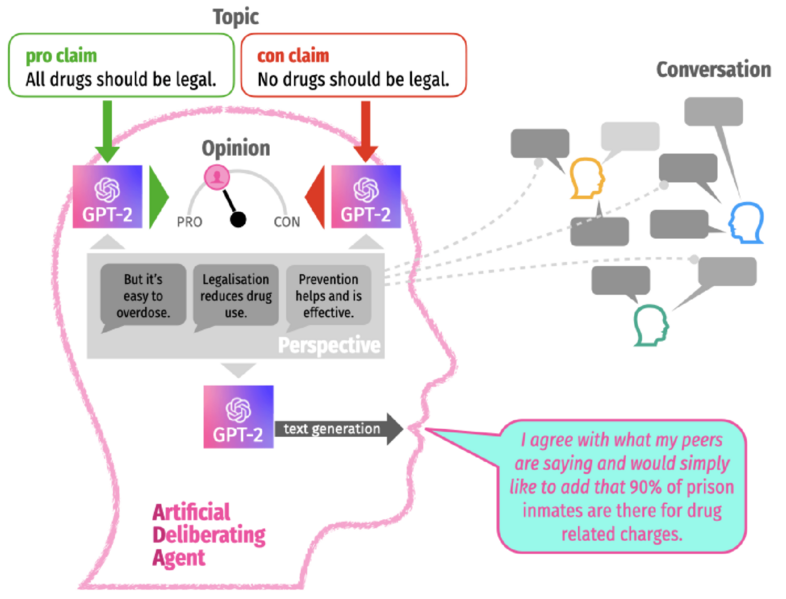Image: Basic design of artificial deliberative agents (ADAs) for argumentation

Description: "As illustrated in Figure 1, ADAs have a limited (and changing) perspective of a conversation, which determines their opinion vis-à-vis the central claims of the debate. In addition, ADAs may contribute to a conversation by generating novel posts conditional on their current perspective. Now, what is the motivation for developing ADAs and natural-language models of argumentative opinion dynamics in the first place? A first motive for studying natural-language ABMAs is to de-idealize formal models and to test their results' structural robustness. If, for example, groups with over-confident agents typically bi-polarize in formal models but not in their natural-language counterparts, the original result is not robust and ought to be treated with care. A second motive is to "reclaim new territory" by computationally investigating novel phenomena that have not been (and possibly cannot be) represented by formal models. Metaphorical language [Hesse,1988], slurs [Rappaport, 2019], framing effects [Grüne-Yanoff, 2016], or the invention of entirely new arguments [Walton and Gordon, 2019] is difficult to represent in formal models, but relatively easy in natural-language ones"
Title: Basic design of artificial deliberative agents (ADAs) for argumentation
Credit: https://arxiv.org/abs/2104.06737
Author: Gregor Betz
Usage Terms: Creative Commons Attribution-Share Alike 4.0
License: CC BY-SA 4.0
License Link: https://creativecommons.org/licenses/by-sa/4.0
Attribution Required?: Yes
Image usage
The following page links to this image:

